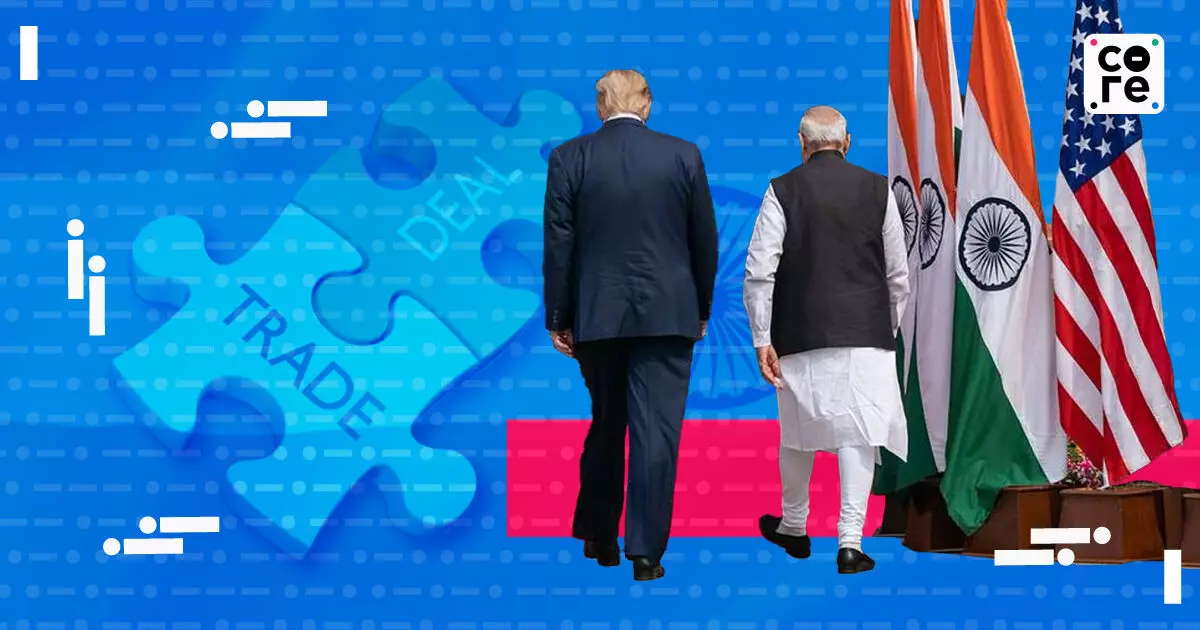
India-US Trade Deal May Meet August Deadline, But The Devil’s In The Details
When it comes to India, the real importance of the trade deal with the US wouldn't be the timing, but what's in the fine print.

The Gist
On August 1, the US is poised to implement unilateral trade deals, raising tariffs on imports to around 15% from the current 10%.
- Wall Street reacts positively, while retail investors show optimism.
- The US-EU trade deal features a 15% tariff, down from a proposed 30%.
- Concerns arise over the vague details of agreements with India and Japan.
August 1 is upon us.
On this day, the United States is set to announce a series of unilateral trade deals, essentially imposing tariffs of around 15% or higher on most goods coming into America.
The current tariff rate is 10% as opposed to almost nothing in April, and is most likely to settle around 15% for most countries. Or at least that is the consensus view.
Markets, at least Wall Street, seem jubilant. And while veteran fund managers are scratching their heads, retail investors, who clearly control the fate and fortune of many stocks in the market, are being won over quite easily.
The US-EU deal is a classic case where no one seems to be waiting for the critical fine print.
Currently, a 15% baseline tariff on European Union goods is in effect, down from the threatened 30%, in exchange for a range of continental investments in the US and substantial purchases of energy and military equipment, according to Bloomberg.
The report adds Japan sealed a similar deal last week while pushing back on some extravagant Trumpian claims.
It is companies that have to absorb the tariffs, or else customers in the US will most likely pay higher prices in the coming days.
Maybe investors are aware of this, maybe not.
Deals Vague On Details
The US wants India to commit to instantly removing customs duties on most products as soon as the bilateral trade deal takes effect, posing another hurdle t...
August 1 is upon us.
On this day, the United States is set to announce a series of unilateral trade deals, essentially imposing tariffs of around 15% or higher on most goods coming into America.
The current tariff rate is 10% as opposed to almost nothing in April, and is most likely to settle around 15% for most countries. Or at least that is the consensus view.
Markets, at least Wall Street, seem jubilant. And while veteran fund managers are scratching their heads, retail investors, who clearly control the fate and fortune of many stocks in the market, are being won over quite easily.
The US-EU deal is a classic case where no one seems to be waiting for the critical fine print.
Currently, a 15% baseline tariff on European Union goods is in effect, down from the threatened 30%, in exchange for a range of continental investments in the US and substantial purchases of energy and military equipment, according to Bloomberg.
The report adds Japan sealed a similar deal last week while pushing back on some extravagant Trumpian claims.
It is companies that have to absorb the tariffs, or else customers in the US will most likely pay higher prices in the coming days.
Maybe investors are aware of this, maybe not.
Deals Vague On Details
The US wants India to commit to instantly removing customs duties on most products as soon as the bilateral trade deal takes effect, posing another hurdle to an agreement before August 1, when new US tariffs will kick in, a report in Business Standard says.
“The US has sought from India an aggressive timeline for duty elimination. It wants zero duty on most of its products as soon as the deal comes into force, except for a few tariff lines that can be phased out in a year or two,” the report quotes a government official saying.
Countries usually reduce import duties on sensitive goods over a specified period of time while removing tariffs on non-sensitive items immediately when the agreement comes into force.
For example, in the recently concluded UK trade deal, India committed to phase out tariffs on 90% of goods over 10 years, with 64% of goods to be tariff-free as soon as the free trade agreement becomes operational.
This is also why you should not be celebrating cheap scotch whiskey right away.
Though Indian could do with lower duties on many products, Trump or no Trump.
To return to the US-EU deal is, it is by all accounts, light on specifics and vague on detail. And some voices are already questioning the big numbers touted.
Ditto with Japan, with whom on paper it would appear like a win-win deal, but the mechanics of it are already being viewed with scepticism.
Not When, But What
Whether India and the US have a deal in a few days or not is not the issue.
It's whether the deal will hold out and for how long, and what the deal really means in the long term.
India faces two additional sets of tariff threats, one for its membership in the BRICS union and the second for importing Russian oil.
Will all this get ironed out in the bilateral trade deal that we are on the verge of signing? Maybe, maybe not.
And could more such tariff slabs be threatened, or worse, imposed on countries like India?
It all depends on the geopolitics of the day and the mood of one person.
Get ready for Round II when the empire strikes back.
When it comes to India, the real importance of the trade deal with the US wouldn't be the timing, but what's in the fine print.

